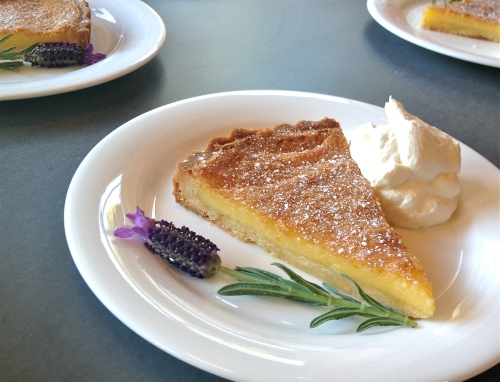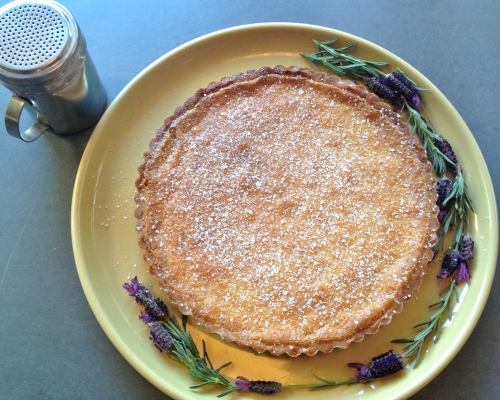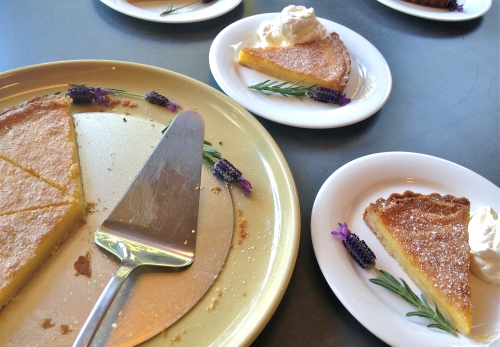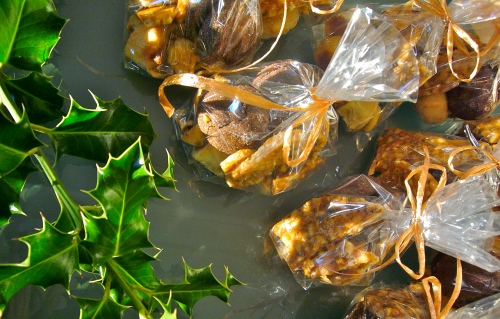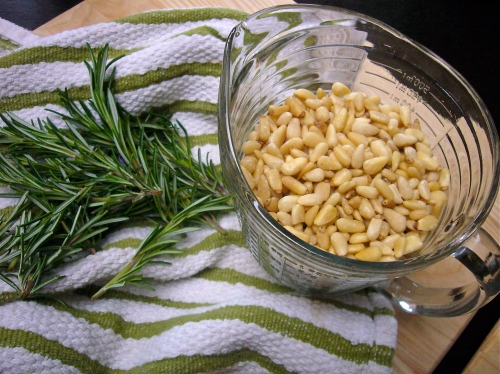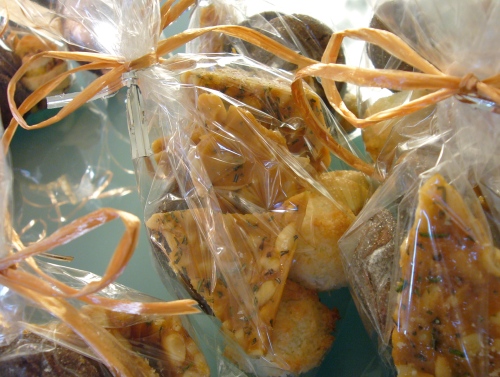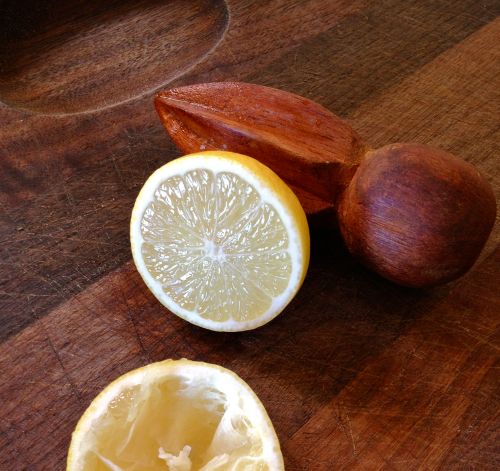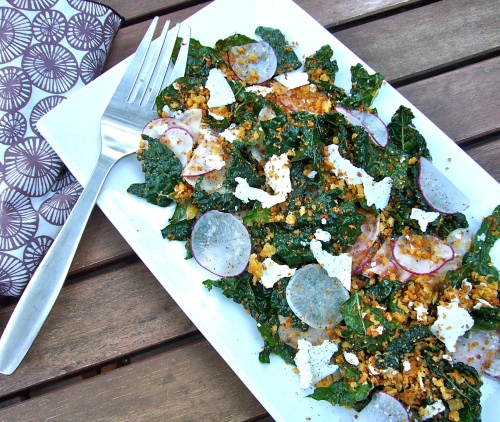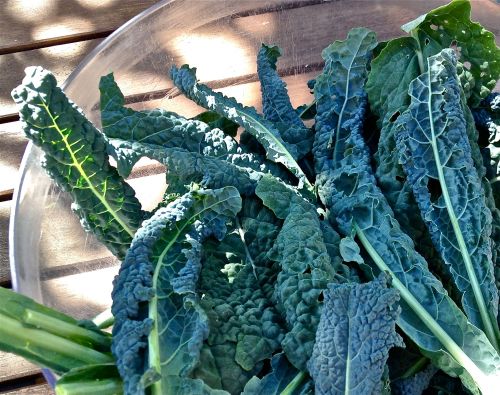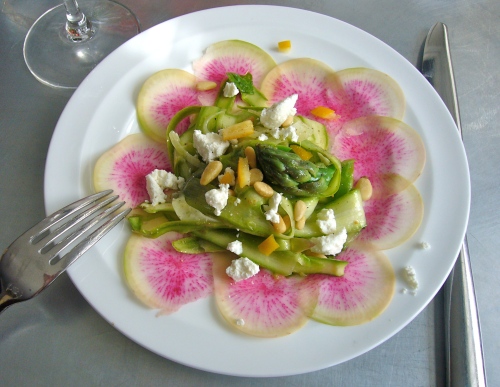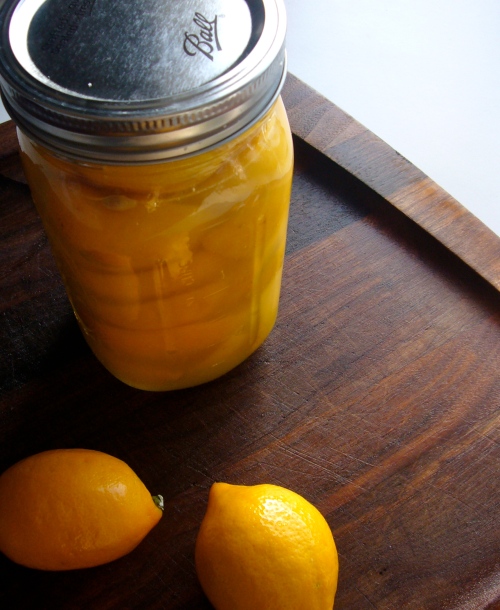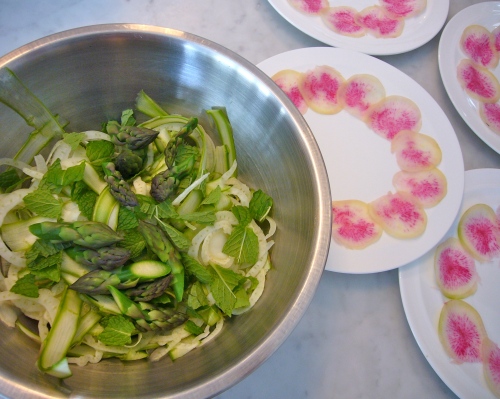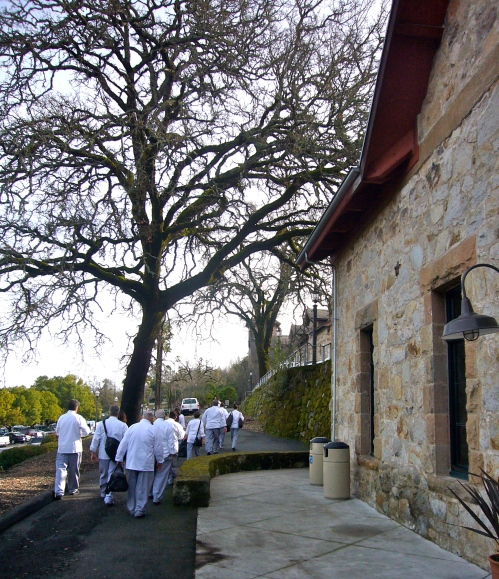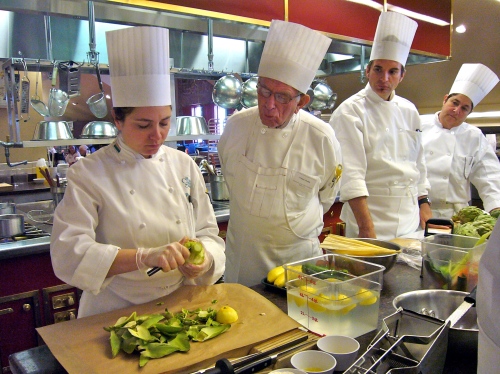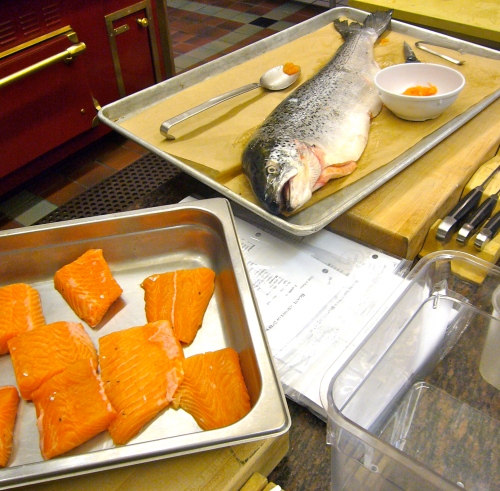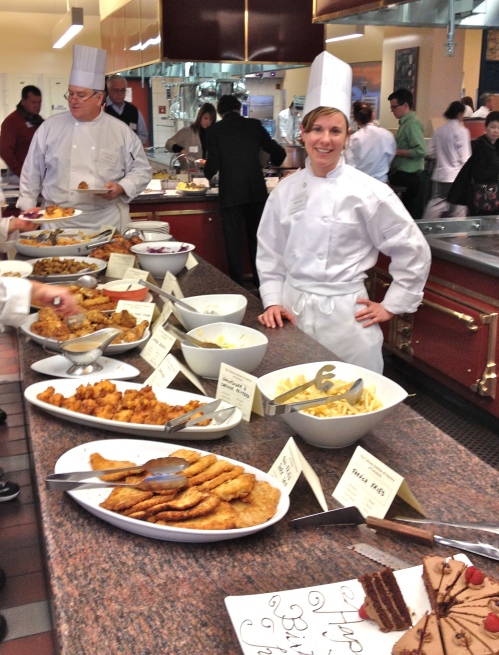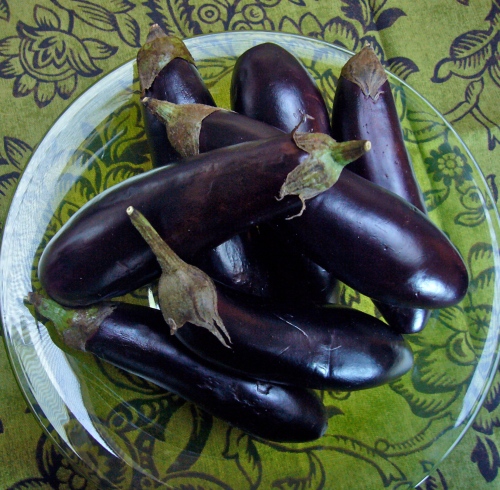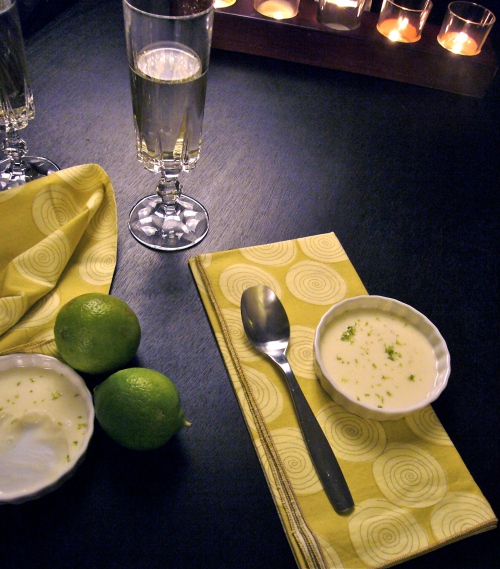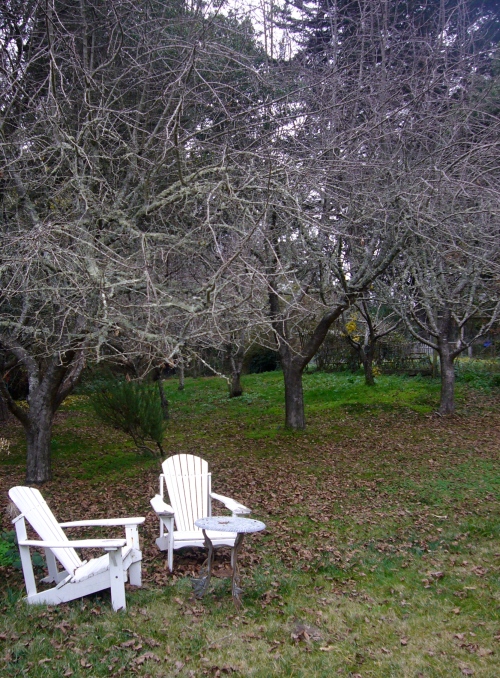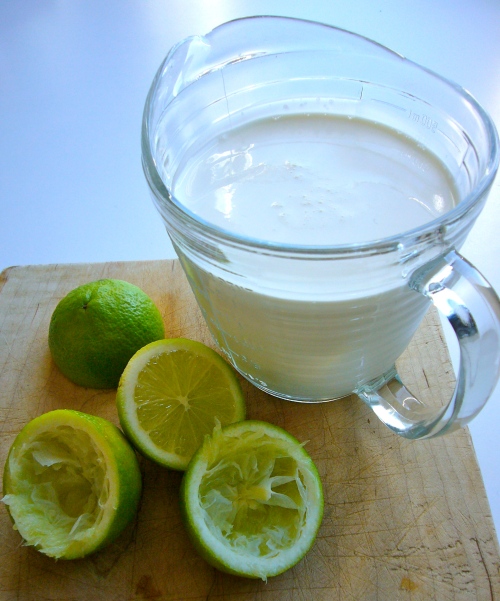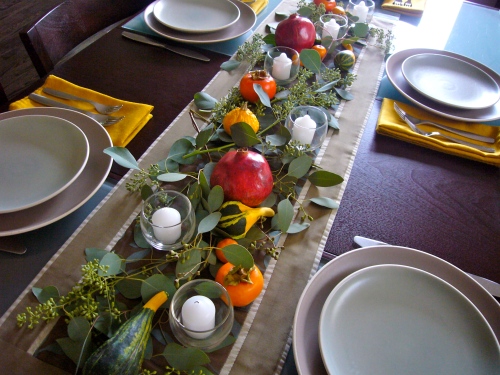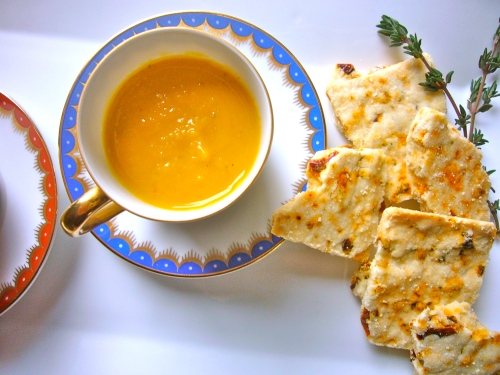My nesting instinct has kicked into high gear. For the last couple months I’ve been squirreling away home-cooked food in the freezer and pantry, preparing for the long-distance sprint of the early weeks of parenthood when–I’ve been warned–we’ll live our lives in foggy 45 minute increments between feedings and diaper changes, lucky if we get a chance to shower or feed ourselves.
In my quest for foods that are comforting, nourishing, and most importantly can be eaten with one hand, I’ve found myself on a bit of a muffin bender. In lots of ways muffins are the perfect food. I’ve been tinkering with the recipe to sneak in a little whole wheat flour, cut back a bit on the sugar, and generally come up with something that I don’t feel (too) guilty about eating for breakfast every day. And now that I’ve got the basic recipe perfected–not too sweet, moist and cakey in the middle, crusty on the outside, golden brown on top–I’m having fun improvising with the flavors. Blackberry-lavender, mango-ginger, blueberry-almond…the possibilities are endless.
Muffins are also the perfect thing to make early in the morning while the sun comes up. As my belly expands and the discomforts of pregnancy make it harder to sleep, I’ve been catching quite a few sunrises these days. (And I suspect there will be more sunrises to enjoy in my future, as the days of sleeping in are surely numbered.) Our kitchen faces east, and for some reason, it just feels right to be making muffins as I watch the marsh outside our windows change colors in the first light of day.
When I sit down with my coffee in those early morning hours, waiting for the muffins to puff up in the oven and to fill the house with their promising smell, I contemplate what the future holds. And not just the near-term future I mentioned above of exhausted days and sleepless nights. But the good stuff. The stuff that makes it all worth while. I wonder what he’ll be like. That little person growing inside me. What will it feel like to hold him in my arms? What will his personality be? Will he be serious, or funny, contemplative, fastidious? Will he look like his dad? What little quirks will he have? Will he someday stand on a stool next to me at the kitchen counter and crack the eggs and lick the muffin batter off the spoon? Which kind of muffins will be his favorite?
Delicious thoughts of anticipation as I wait patiently for those muffins in the oven…
The Ultimate Muffin Base (and a few of my favorite variations below)
Adapted a bit from the Cook’s Illustrated Cookbook. Makes a dozen medium-sized muffins.
2 cups all-purpose flour
1 cup whole wheat flour
1 Tablespoon baking powder
1/2 teaspoon baking soda
1/2 teaspoon salt
ground spices (see variations)
1 cup plain yogurt (I used full fat versions, Greek or European style. If you try with low-fat, let me know how it works)
1/2 cup milk (I used 1% because that’s what we have in our fridge. If you use low-fat yogurt, you might need whole milk)
citrus zest, juice and/or grated ginger (see variations)
1/2 cup (1 stick) unsalted butter, softened slightly
1/4 cup white sugar
1/4 cup brown sugar
2 eggs
vanilla or other extract (see variations)
fresh fruit, dried fruit, and/or nuts (see variations)
extra sugar, spices and nuts for topping (see variations)
Pre-heat oven to 375 degrees and generously grease muffin tins with butter. Mix first five dry ingredients (plus spices, if using) in a medium bowl and set aside. Mix yogurt, milk (and zest/juice, if using) in small bowl and set aside.
Using a mixer (fitted with a paddle attachment, if you have a standing mixer), beat in a large bowl until fluffy: butter, white sugar and brown sugar. Beat in eggs, one at a time, and extract, if using. Turn mixer speed to low and mix in yogurt mixture and dry ingredients, alternating to fold in about 1/3 of each at a time, mixing gently until just blended. Turn off mixer and add fruit/nuts, gently folding in by hand.
Scoop muffin batter into greased muffin tins. (An ice cream scoop with a spring handle works wonders for keeping your portions even and minimizing drips.) Sprinkle the tops of muffins with sugar, spices, nuts (see variations.) Bake at 375 degrees for 20-25 minutes, until golden on top and a toothpick inserted into the center of a muffin comes out clean. Remove from oven and allow to rest in muffin tin for 3-4 minutes, but not too long–the texture will be better if they don’t steam in their tins for more than a few minutes. As soon as the tops of the muffins are cool enough to handle, run a butter knife around the edges of each muffin and gently pry them out and place on a cooling rack to cool.
Enjoy at least one while still warm (that’s a must!). For any that you don’t eat the same day you bake them, wrap in plastic and freeze. To re-heat, wrap muffins in tin foil, leaving the tops slightly exposed and heat in 325 degree oven ~15 min, or until warm in the center.
Variation #1: Mango Ginger Muffins
Follow recipe above, with these variations:
Add to dry ingredients: 2 teaspoons ground ginger, 1 teaspoon freshly ground nutmeg
Add to yogurt mixture: 1 teaspoon zest and a tablespoon or two of juice from an orange, 1 teaspoon freshly grated ginger
Add to batter after eggs: 1 teaspoon vanilla extract
Fold into batter by hand: 1 1/2-2 cups fresh diced mango (from about 2 medium-sized mangoes)
Mix in a small bowl and sprinkle on top of muffins before baking:2-3 tablespoons sugar (I like to use turbinado or raw sugar), 1/2 teaspoon ground ginger, 1/2 teaspoon ground nutmeg
Variation #2: Blackberry Lavender Muffins
Follow recipe above, with these variations:
Add to dry ingredients: 1 teaspoon ground ginger
Add to yogurt mixture: 1 teaspoon lemon zest
For butter/sugar mixture: use 1 cup of white sugar (omit brown sugar)
Add to batter after eggs: 1 teaspoon vanilla extract, 1 teaspoon lavender extract
Fold into batter by hand: 1 1/2 cups fresh blackberries (one basket), cut into half
Sprinkle a little sugar on top of muffins before baking (I like to use turbinado or raw sugar)
Variation #3: Blueberry Almond Muffins
Follow recipe above, with these variations:
For dry ingredients: Use 1 1/2 cups all-purpose flour, 1/2 cup whole wheat flour, and 1 cup ground almond meal (I bought mine at Trader Joe’s, but you can also just grind whole almonds in the food processor.)
Add to batter after eggs: 1 Tablespoon almond extract
Fold into batter by hand: 1 1/2-2 cups fresh blueberries
Mix in a small bowl and sprinkle on top of muffins before baking:2-3 tablespoons sugar (I like to use turbinado or raw sugar), 1/4 cup sliced almonds (break them up a little with your fingers) and a couple of dashes of ground cinnamon
Variation #4: Cranberry-Apricot-Orange-Pecan Muffins
Follow recipe above, with these variations:
Mix in a small bowl and set aside: 2/3 cup dried cranberries, coarsely chopped, 1/4 cup dried apricots, chopped, 2 teaspoons orange zest, 1/4 cup freshly squeezed orange juice
Add to dry ingredients: 1 teaspoon ground ginger, 1 teaspoon ground cinnamon, dash or two of freshly ground nutmeg
Fold into batter by hand: Cranberry apricot mixture, 2/3 cup coarsely chopped pecans
Mix in a small bowl and sprinkle on top of muffins before baking:2-3 tablespoons sugar (I like to use turbinado or raw sugar), 1/2 teaspoon cinnamon, 1/2 teaspoon ground ginger, 1/4 cup finely chopped pecans






